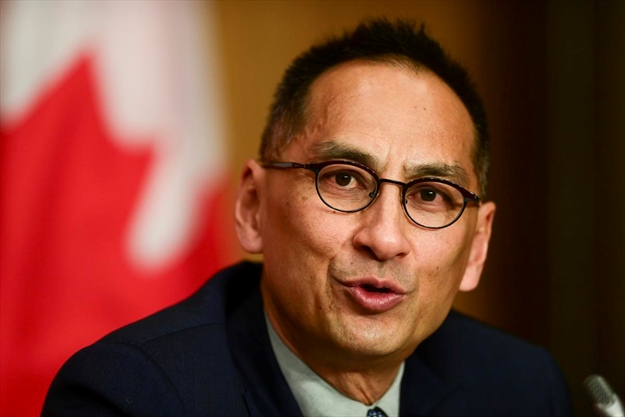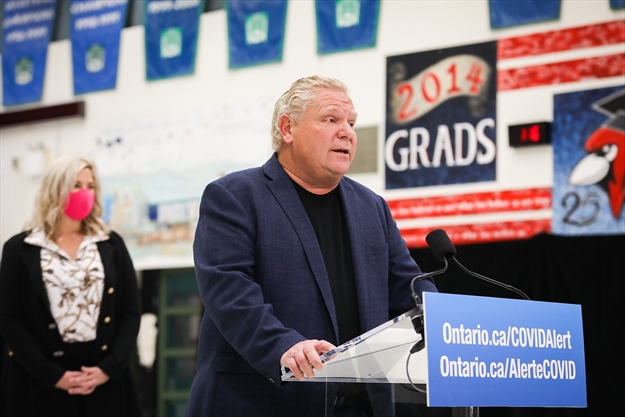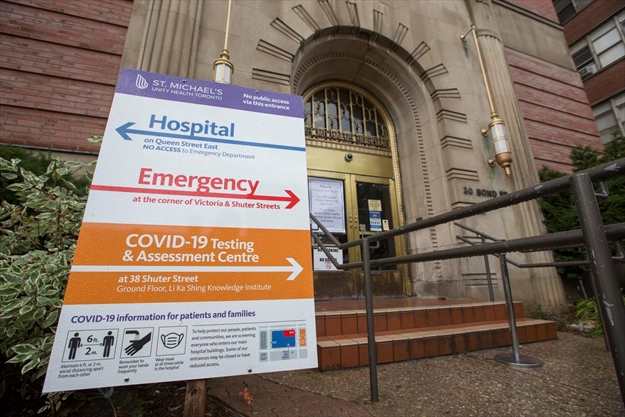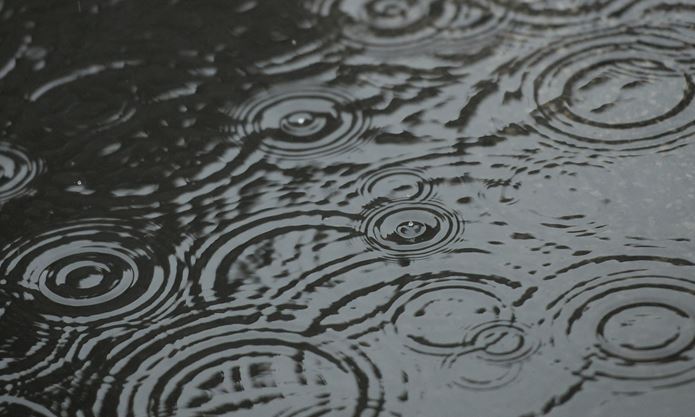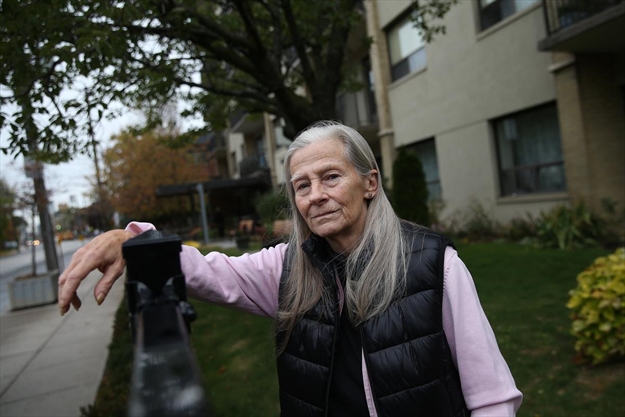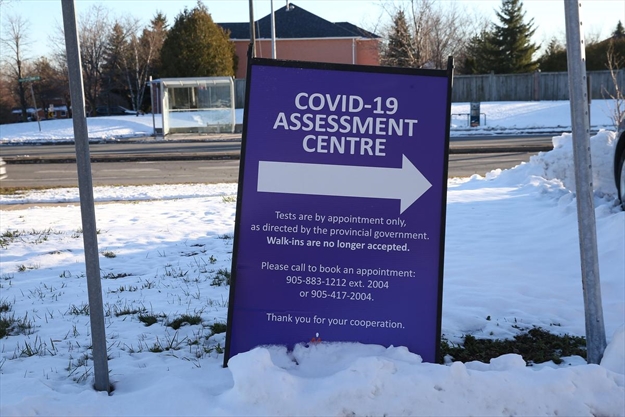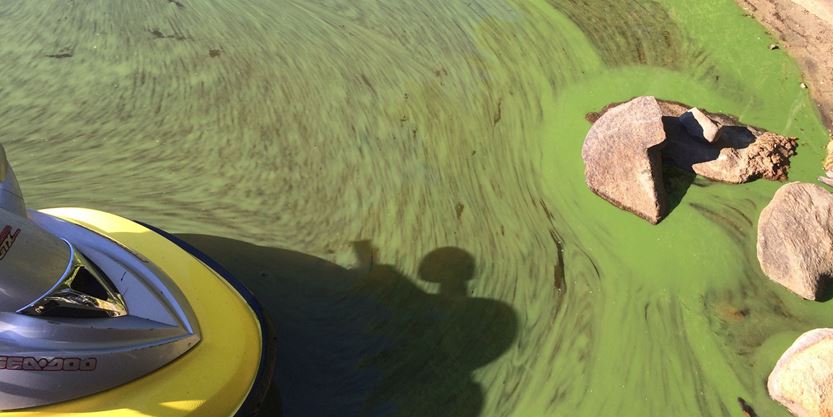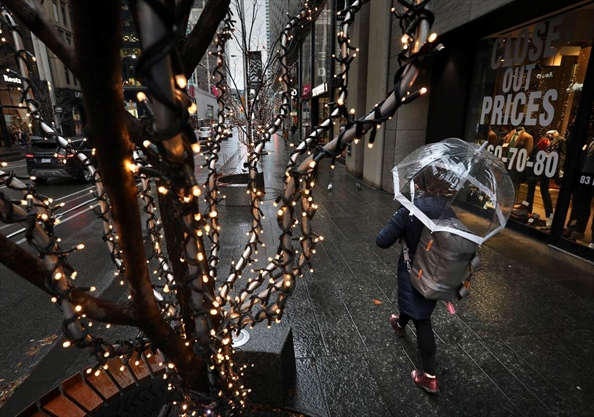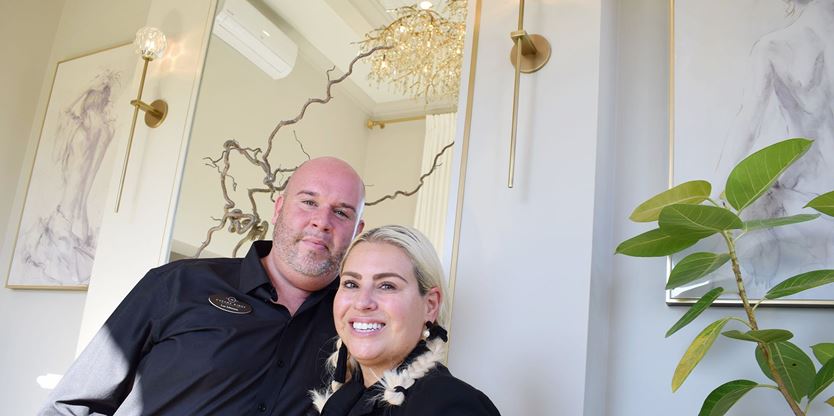The latest news from Canada and around the world Sunday. This file will be updated throughout the day. Web links to longer stories if available.
9:43 p.m.: South Korea’s health minister said Monday that the Seoul metropolitan area is now a “COVID-19 war zone,” as the country reported another 615 new infections and the virus appeared to be spreading faster.
The country has recorded more than 5,300 new infections in the past 10 days and Monday was the 30th day in a row of triple-digit daily jumps.

Most of the new infections were detected in the Seoul metropolitan area where health workers are struggling to stem transmissions tied to various places, including restaurants, schools, hospitals and long-term care facilities.
“The capital area is now a COVID-19 war zone,” Health Minister Park Neung-hoo said in a virus meeting, pleading for citizen vigilance.
He said the country may have to further increase social distancing to prevent the resurgence in the capital area from “exploding into a major outbreak nationwide and collapsing the health-care system.”
While South Korea managed to contain a major outbreak in its southeastern region in spring by channeling nationwide health resources and personnel, it’s less clear where the reinforcements will come if the virus wreaks havoc in the densely-populated capital area, where half of the country’s 51 million people live.
7:34 p.m.: The latest numbers of confirmed COVID-19 cases in Canada as of 7:30 p.m. ET on Sunday Dec. 6, 2020.
There are 415,182 confirmed cases in Canada.
_ Canada: 415,182 confirmed cases (73,379 active, 329,138 resolved, 12,665 deaths).The total case count includes 13 confirmed cases among repatriated travellers.
There were 6,261 new cases Sunday from 71,793 completed tests, for a positivity rate of 8.7 per cent. Over the past seven days, there have been a total of 43,146 new cases. The seven-day rolling average of new cases is 6,164.
There were 76 new reported deaths Sunday. Over the past seven days there have been a total of 601 new reported deaths. The seven-day rolling average of new reported deaths is 86. The seven-day rolling average of the death rate is 0.23 per 100,000 people. The overall death rate is 33.69 per 100,000 people.
There have been 11,977,563 tests completed.
_ Newfoundland and Labrador: 351 confirmed cases (30 active, 317 resolved, four deaths).
There were four new cases Sunday from 234 completed tests, for a positivity rate of 1.7 per cent. Over the past seven days, there have been a total of 14 new cases. The seven-day rolling average of new cases is two.
There have been no deaths reported over the past week. The overall death rate is 0.77 per 100,000 people.
There have been 64,368 tests completed.
_ Prince Edward Island: 80 confirmed cases (11 active, 69 resolved, zero deaths).
There were four new cases Sunday from 546 completed tests, for a positivity rate of 0.73 per cent. Over the past seven days, there have been a total of eight new cases. The seven-day rolling average of new cases is one.
There have been no deaths reported over the past week. The overall death rate is zero per 100,000 people.
There have been 63,112 tests completed.
_ Nova Scotia: 1,368 confirmed cases (88 active, 1,215 resolved, 65 deaths).
There were four new cases Sunday from 849 completed tests, for a positivity rate of 0.47 per cent. Over the past seven days, there have been a total of 78 new cases. The seven-day rolling average of new cases is 11.
There have been no deaths reported over the past week. The overall death rate is 6.69 per 100,000 people.
There have been 153,214 tests completed.
_ New Brunswick: 534 confirmed cases (82 active, 445 resolved, seven deaths).
There were four new cases Sunday from 502 completed tests, for a positivity rate of 0.80 per cent. Over the past seven days, there have been a total of 39 new cases. The seven-day rolling average of new cases is six.
There have been no deaths reported over the past week. The overall death rate is 0.9 per 100,000 people.
There have been 105,468 tests completed.
_ Quebec: 151,599 confirmed cases (14,326 active, 130,018 resolved, 7,255 deaths).
There were 1,691 new cases Sunday from 10,235 completed tests, for a positivity rate of 17 per cent. Over the past seven days, there have been a total of 10,561 new cases. The seven-day rolling average of new cases is 1,509.
There were 24 new reported deaths Sunday. Over the past seven days there have been a total of 222 new reported deaths. The seven-day rolling average of new reported deaths is 32. The seven-day rolling average of the death rate is 0.37 per 100,000 people. The overall death rate is 85.5 per 100,000 people.
There have been 2,248,348 tests completed.
_ Ontario: 127,309 confirmed cases (15,547 active, 107,990 resolved, 3,772 deaths).
There were 1,924 new cases Sunday from 57,313 completed tests, for a positivity rate of 3.4 per cent. Over the past seven days, there have been a total of 12,563 new cases. The seven-day rolling average of new cases is 1,795.
There were 15 new reported deaths Sunday. Over the past seven days there have been a total of 124 new reported deaths. The seven-day rolling average of new reported deaths is 18. The seven-day rolling average of the death rate is 0.12 per 100,000 people. The overall death rate is 25.89 per 100,000 people.
There have been 6,366,097 tests completed.
_ Manitoba: 18,806 confirmed cases (9,216 active, 9,195 resolved, 395 deaths).
There were 383 new cases Sunday. Over the past seven days, there have been a total of 2,323 new cases. The seven-day rolling average of new cases is 332.
There were 14 new reported deaths Sunday. Over the past seven days there have been a total of 94 new reported deaths. The seven-day rolling average of new reported deaths is 13. The seven-day rolling average of the death rate is 0.98 per 100,000 people. The overall death rate is 28.84 per 100,000 people.
There have been 357,524 tests completed.
_ Saskatchewan: 10,139 confirmed cases (4,550 active, 5,530 resolved, 59 deaths).
There were 409 new cases Sunday from 2,114 completed tests, for a positivity rate of 19 per cent. Over the past seven days, there have been a total of 1,900 new cases. The seven-day rolling average of new cases is 271.
There were four new reported deaths Sunday. Over the past seven days there have been a total of 14 new reported deaths. The seven-day rolling average of new reported deaths is two. The seven-day rolling average of the death rate is 0.17 per 100,000 people. The overall death rate is 5.02 per 100,000 people.
There have been 271,424 tests completed.
_ Alberta: 68,566 confirmed cases (19,484 active, 48,467 resolved, 615 deaths).
There were 1,836 new cases Sunday. Over the past seven days, there have been a total of 12,122 new cases. The seven-day rolling average of new cases is 1,732.
There were 19 new reported deaths Sunday. Over the past seven days there have been a total of 82 new reported deaths. The seven-day rolling average of new reported deaths is 12. The seven-day rolling average of the death rate is 0.27 per 100,000 people. The overall death rate is 14.07 per 100,000 people.
There have been 1,502,472 tests completed.
_ British Columbia: 36,132 confirmed cases (9,982 active, 25,658 resolved, 492 deaths).
There were zero new cases Sunday. Over the past seven days, there have been a total of 3,490 new cases. The seven-day rolling average of new cases is 499.
There were zero new reported deaths Sunday. Over the past seven days there have been a total of 65 new reported deaths. The seven-day rolling average of new reported deaths is nine. The seven-day rolling average of the death rate is 0.18 per 100,000 people. The overall death rate is 9.7 per 100,000 people.
There have been 828,968 tests completed.
_ Yukon: 54 confirmed cases (12 active, 41 resolved, one deaths).
There were zero new cases Sunday. Over the past seven days, there have been a total of nine new cases. The seven-day rolling average of new cases is one.
There have been no deaths reported over the past week. The overall death rate is 2.45 per 100,000 people.
There have been 5,522 tests completed.
_ Northwest Territories: 15 confirmed cases (zero active, 15 resolved, zero deaths).
There were zero new cases Sunday. Over the past seven days, there have been a total of zero new cases. The seven-day rolling average of new cases is zero.
There have been no deaths reported over the past week. The overall death rate is zero per 100,000 people.
There have been 6,511 tests completed.
_ Nunavut: 216 confirmed cases (51 active, 165 resolved, zero deaths).
There were two new cases Sunday. Over the past seven days, there have been a total of 39 new cases. The seven-day rolling average of new cases is six.
There have been no deaths reported over the past week. The overall death rate is zero per 100,000 people.
There have been 4,459 tests completed.
6 p.m.: Alberta is reporting 1,836 new COVID-19 cases and 19 additional deaths.
It’s the fourth straight day the province has seen new case numbers above 1,800.
There are 600 people in hospital with COVID-19 in Alberta, 100 of whom are in intensive care.
5:35 p.m.: A Staten Island pub owner slammed his Jeep into a sheriff’s deputy in a desperate effort to evade arrest early Sunday for continuing to serve patrons in defiance of coronavirus restrictions, authorities said.
Daniel Presti, owner of Mac’s Pub, hopped in his turquoise Jeep and hit the gas, sending the deputy flying onto the hood just after midnight when officers tried to arrest him outside his bar, officials said.
The sheriff’s deputy, identified by sources as Sgt. Kenneth Matos, suffered two fractured tibias. He was taken to Staten Island University Hospital.
“He just doesn’t care about people’s lives. That’s what this comes down to,” Bill Neidhardt, a spokesman for Mayor Bill de Blasio, said Sunday.
“He doesn’t care if his pub spreads a deadly virus. He doesn’t care if a uniformed officer is clinging for life on the hood of his car. It’s truly horrible and unacceptable and the people of New York City will reject this disgusting way of thinking.”
The New York City Sheriff’s Office had been conducting surveillance Saturday night on the bar, which has been a rallying point for people angry over COVID restrictions.
5:15 p.m.: Nova Scotia is amending today’s COVID-19 case count to add one more.
Health officials say the latest patient is a student at an elementary school in Dartmouth, N.S.
The affected school will now be closed until Dec. 10.
4:30 p.m.: President Donald Trump
The 76-year-old former New York mayor has travelled extensively to battleground states in recent days and weeks in an effort to help Trump subvert his election loss. On numerous occasions he has met with local officials for hours at a time without wearing a mask.
Trump, who confirmed Giuliani’s positive test in a Sunday afternoon tweet, wished him a speedy recovery.
“Get better soon Rudy, we will carry on!!!” Trump wrote.
Giuliani attended a hearing at the Georgia Capitol on Thursday where he went without a mask for several hours. Several state senators also did not wear masks at the hearing.
4:15 p.m.: Prince Edward Island has announced a two-week circuit breaker in an attempt to gain control of rising COVID-19 cases. Beginning Monday morning and lasting until Dec. 21, indoor dining at restaurants will be prohibited and there will be no organized or recreational team sports. Gyms, libraries, bingo halls and casinos will also be closed, retail stores must limit capacity to 50 per cent, and weddings and funerals will be limited to 10 people excluding officials. Organized gatherings, including faith services, will only be allowed to have 10 people, whether they are indoors or outdoors. Schools will remain open, except for four high schools in the Charlottetown area.
2:52 p.m.: Saskatchewan is reporting 415 new COVID-19 cases and four additional deaths. The province says that two of the people who died were in their 60s and were from Regina and the Far North zones, while the two others were in their 70s and were from the South zone. Their deaths bring the provincial total to 59 since the start of the pandemic. Saskatchewan reports there are 135 people in hospital with COVID-19, with 26 of those receiving intensive care.
2:10 p.m.: Manitoba is reporting 383 new cases of COVID-19 as well as 14 new related deaths today.
Health officials say many of the deaths were linked to outbreaks at care homes and involve patients who ranged in age from their 60s to their 90s.
But the province says one was a man in his 20s who lived in the Winnipeg region. The government says 348 people are in hospital with COVID-19, and 43 of those are receiving intensive care. So far, there have been 395 COVID-19 deaths in Manitoba.
1:54 p.m.: Nova Scotia is reporting four new cases of COVID-19, all of them in the province’s central region.
As of today, the province was dealing with 88 active cases, though no one with the virus has been admitted to hospital.
One of the new cases is related to travel outside Atlantic Canada, and the three others remain under investigation.
1:45 p.m.: Health officials in Newfoundland and Labrador are reporting four new cases of COVID-19, three of them men who recently returned to the province from Alberta.
The fourth case involves a man from the central region who was a close contact of a previous case.
The three travel-related cases include two men in their 40s, one of whom is not from Newfoundland and Labrador, and a third man in his 60s from the central region.
The province now has 30 active cases of COVID-19, though 317 people have recovered from the virus.
12:20 p.m. Quebec is reporting 1,691 new cases of COVID-19 today and 24 additional deaths linked to the virus.
Public health officials say 10 of those deaths took place in the past 24 hours.
The regions with the highest number of new infections are Montreal with 514; Monteregie south of Montreal, with 228; the Quebec City area with 143, and Lanaudiere, north of Montreal, also with 143.
Quebec has now recorded 151,599 total cases and 7,255 deaths since the start of the pandemic.
12:15 p.m. When Jenny Pitt-Clark first started hearing about COVID-19, like many Canadians, she began to stock up. But the expenses kept piling up. Printer ink was costly, and soon she needed more paper and pens. During a particularly challenging week, both of her monitors went kaput.
That’s why she was relieved to hear that next year’s tax filing season will be a little less complicated for Canadians, with the government announcing in its Nov. 30 a new work-from-home personal tax deduction of up to $400 for employees who have incurred “modest expenses” in 2020 due to remote working.
Pitt-Clark is looking into the T2200, a tax form filled out by employers, which would allow her to deduct more than $400 worth of expenses. But if that doesn’t happen, at least she has the new $400 deduction to lean on, she said.
on how the deduction works, who it will benefit, and what else you need to know before next year’s tax season.
11 a.m. Canada is poised to be the next country to deploy mass rapid testing for COVID-19 in a gambit that Harvard epidemiologist Michael Mina says could immediately stem the spread of the virus.
As an epidemiologist and assistant professor at Harvard T.H. Chan School of Public Health, Mina has been leading research around COVID-19 testing throughout the pandemic.
Rapid at-home testing could be a COVID-19 game changer, he said.
Mina argues that government regulations should be changed to encourage manufacturers to develop the tests and public funding rolled out to assist companies with building them.
Other countries have had success with or are moving to use rapid testing to control the spread of COVID-19. In Canada, some rapid-testing systems, which provide results in minutes, are approved and being widely used. But the tests aren’t approved for household use and top public health officials remain skeptical since, generally speaking, a faster test yields less accurate results. However, when it comes to an effective testing strategy, Mina says accuracy isn’t everything.
10:20 a.m. (updated) Ontario has reached a record high of new COVID-19 infections for the second consecutive day.
The province logged 1,924 new cases in the past 24 hours, pushing above the 1,859 case record hit a day earlier.
The province is also reporting 15 new deaths linked to the virus.
Health Minister Christine Elliott says Toronto had the highest number of new cases at 504, while Peel logged 463 and York Region saw 198.
There are 1,574 more resolved cases, while the number of active cases rose to 15,547.
The number of patients in the province’s hospitals decreased to 701, with 204 in intensive care.
10:17 a.m. Six months ago, Apple and Google introduced a new smartphone tool designed to notify people who might have been exposed to the coronavirus, without disclosing any personal information. But for the most part, Americans haven’t been all that interested.
Fewer than half of U.S. states and territories — 19 in total — have made such technology widely available. And according to a data analysis by The Associated Press, the vast majority of Americans in such locations haven’t activated the tool.
Data from 16 states, Guam and the District of Columbia shows that 8.1 million people had utilized the technology as of late November. That’s about one in 14 of the 110 million residents in those regions.
9:35 a.m. The theft of 200,000 doses (or 75,000, depending on which story you read) of polio vaccine from the Micro-Biology and Hygiene Institute of Montreal more than six decades ago was then worth the princely sum of $50,000.
More concerning, it upended a provincial vaccination effort trying mightily to slow one of Canada’s last polio epidemics; a storm that had already infected more than 500 and left 29 dead in Montreal alone. Police were sent scrambling, desperate to uncover the doses before they expired.
With multiple candidates racing into the final stretch — Britain became the to authorize a vaccine for use this week — COVID-19 vaccines are about to become one of the hottest commodities on the planet. In seeking a distribution company, Canada’s government notes in its tender that doses must be trackable, and “safeguarded at all times as high value assets and high value targets for criminal elements.”
Around the world, everything from dummy shipments to armed escorts and elaborate GPS tracking are being floated as potential security measures.
9:27 a.m. Pope Francis says the Christmas season provides reason for hope amid the difficulties of the coronavirus pandemic.
During his Sunday blessing, Francis noted that the Vatican’s Christmas tree had gone up last week in St. Peter’s Square, and that work is underway to build the life-size Nativity scene next to it.
Pointing to the tree from his studio window over the square, Francis said such symbols of Christmas “are signs of hope, especially in this difficult period.”
9:12 a.m. Each spring, near a south Florida seaside strip known as the Broadwalk, the grateful retailers and restaurateurs of Hollywood Beach gather for a
“Canadafest” has played out for nearly 40 years in the heart of a uniquely Canadian diaspora south of Fort Lauderdale, a way of saying thank you to the roughly 1.2 million people from north of the border who visit the state annually.
COVID-19, of course, had other plans.
It’s just one illustration of the looming “dark winter” the pandemic has wrought in the United States, where the number of single-day deaths and new infections have blown past earlier peaks established in the spring.
And in a part of the country that has come to embrace Canada’s seasonal visitors as family, the health risks and cross-border travel restrictions are sure to amplify the pain.
8:30 a.m. A new study, currently in pre-print and under peer review at a medical journal, shines a light on just how many long-term-care residents suffering from COVID-19 may have been denied the hospital care they desperately needed before death.
The study by researchers at the University of Toronto and Public Health Ontario looks at the number of people with COVID-19 who were hospitalized before death and finds that in March and April, when hundreds of long-term-care homes in the province were experiencing outbreaks, just 15.5 per cent of nursing home residents with the virus were hospitalized before they died.
This reached a high of 41.2 per cent in June and July when the first wave was ending. That compares to 81.4 per cent of people who lived in the community, a percentage that has held steady throughout the pandemic.
Looking at the pandemic as a whole, from March to October, the trend was similar: overall, just 22.4 per cent of nursing home residents with COVID-19 were admitted to hospital before death, compared to 81.4 per cent for community residents.
7:19 a.m. Italy had more than 21,000 daily coronavirus cases and added 662 deaths in the last 24 hours.
The 21,052 new cases raised Italy’s total to nearly 1.6 million. There’s been 59,514 confirmed deaths, the second-highest toll in Europe behind Britain’s toll.
This week, Italy’s Premier Giuseppe Conte signed a decree limiting travel between regions Dec. 21 to Jan. 6, national Epiphany Day holiday. Conte hopes that will prevent holiday vacations that could fuel contagion.
7:15 a.m. The Oregon Medical Board has suspended the medical license of a doctor who said at a pro-Trump rally that he doesn’t wear a mask at his Dallas, Oregon, clinic.
KGW-TV reported Friday that Dr. Steven LaTulippe also said at the November rally that he also encourages others not to wear masks.
A state order requires health care workers to wear a mask in health care settings.
The medical board voted this week to suspend LaTulippe’s license immediately due to concerns about patient safety.
LaTulippe did not respond to a request for comment from KGW-TV and has previously declined to comment.
7:07 a.m. South Korea says it’ll further toughen physical distancing rules as recent restrictions has failed to curb a viral resurgence that threatens the country’s health care system.
Health Minister Park Neung-hoo said Sunday recently elevated distancing rules haven’t showed much effect. Park says South Korea could face a shortage of intensive care unit beds if the current level continues for one to two weeks.
Under new restrictions effective Tuesday for three weeks, authorities will shut down karaoke rooms, fitness centres, indoor gyms and most of cram schools in the Seoul metropolitan area. Some high-risk facilities like nightclubs in the Seoul area have already been shut down.
Events must be under 50 people in the Seoul area and sports matches will be held without fans.
7:05 a.m. Eight people in the northern Chinese city of Manzhouli have coronavirus after everyone in the city was tested following the discovery of two locally acquired infections, the official Xinhua News Agency reported Sunday.
Authorities conducted nucleic acid tests on 203,378 people in the city on the border with Mongolia in two rounds starting Nov. 22 and Nov. 27.
The city had 24 locally acquired cases as of Sunday, Xinhua said. It said 1,239 people who had close contact with them were under medical observation.
Sunday 7 a.m. Coronavirus infections in Russia hit a new record on Sunday, as the country’s authorities registered 29,039 new confirmed cases, the highest daily spike in the pandemic.
Russia’s total of over 2.4 million reported infections remains the fourth largest caseload in the world. Russia has also reported 43,141 virus-related deaths.
Russia has been swept by a resurgence of the virus this fall, with daily confirmed infections and deaths significantly exceeding those reported in the spring. Nevertheless, Russian authorities have rejected the idea of another nationwide lockdown or any widespread closures of businesses.
On Wednesday, President Vladimir Putin ordered a “large-scale” vaccination against COVID-19 to begin in Russia with the domestically developed Sputnik V vaccine that is still undergoing advanced studies needed to ensure its safety and effectiveness. Doctors and teachers will be first in line to get inoculated, Putin said.
Saturday 7:30 p.m.: The latest numbers of confirmed COVID-19 cases in Canada as of 7:30 p.m. ET on Saturday Dec. 5, 2020.
There are 408,921 confirmed cases in Canada.
_ Canada: 408,921 confirmed cases (71,450 active, 324,882 resolved, 12,589 deaths).The total case count includes 13 confirmed cases among repatriated travellers.
There were 6,352 new cases Saturday from 79,671 completed tests, for a positivity rate of 8.0 per cent. Over the past seven days, there have been a total of 43,361 new cases. The seven-day rolling average of new cases is 6,194.
There were 93 new reported deaths Saturday. Over the past seven days there have been a total of 598 new reported deaths. The seven-day rolling average of new reported deaths is 85. The seven-day rolling average of the death rate is 0.23 per 100,000 people. The overall death rate is 33.49 per 100,000 people.
There have been 11,905,770 tests completed.

